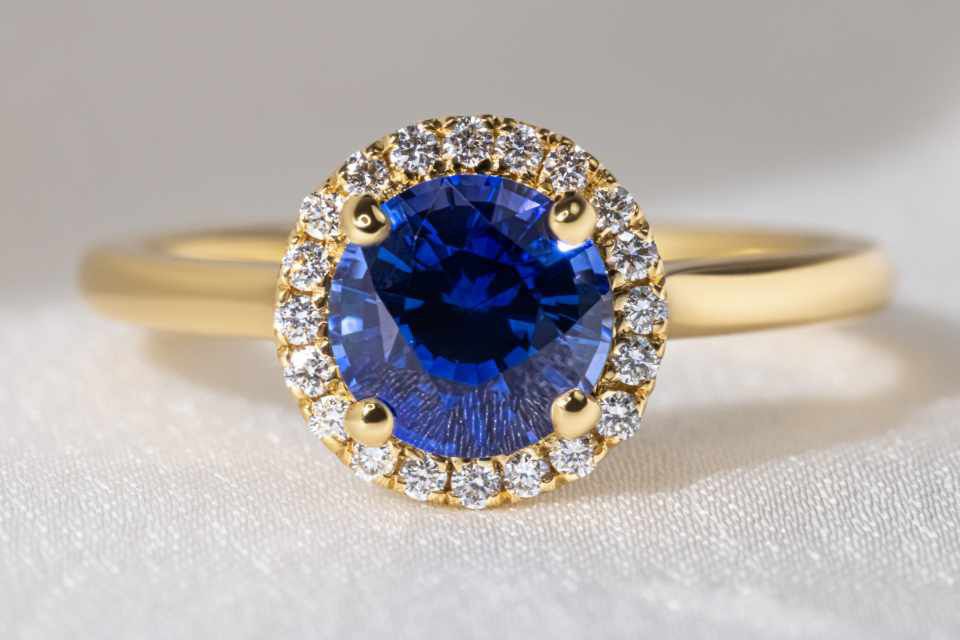Lab Grown Blue Diamond: A Unique and Sustainable Choice
Introduction
Lab grown diamonds have changed the jewelry industry forever, from obtaining the brilliance and luster of traditional diamonds without the environmental destruction and ethics of creating real diamonds. The lab grown blue diamond is one of the most remarkable of these options and combines beauty, sustainability and value.
What is a Lab Grown Blue Diamond?
A lab grown blue diamond is a synthetic gemstone manufactured using high tech, mimicking the natural diamond oozing process. Whereas mined diamonds from those millions of years back under an unimaginable amount of pressure and heat in the depths of the earth, lab grown diamonds are manufactured in a lab under strict control. Today experts can create diamonds of the same structure and composition as those mined by using methods such as High Pressure High Temperature (HPHT) or Chemical Vapor Deposition (CVD).
A lab grown blue diamond gets its color from trace amounts of boron introduced during growth, a beautiful blue step in the mixing of the stones. As a result of this unique combination of science and artistry, this gemstone is both authentic and ethically produced.
How are Lab Grown Blue Diamonds Made?
The lab grown blue diamond requires cutting edge technology and a controlled environment. Two primary methods are used:
- High-Pressure High-Temperature (HPHT): It is like the environment where natural diamonds form. The blue color is produced by carbon exposed to high pressure and temperature, then boron is added.
- Chemical Vapor Deposition (CVD): This process involves injecting carbon rich gas into a spark gap chamber that breaks down and then drops carbon atoms onto a diamond seed layer. The CVD method is very flexible, and the produced diamonds can be virtually perfect in clarity and color.
Lab Grown vs Natural Blue Diamonds
There is no difference between a lab grown blue diamond and a natural blue diamond when the eyes are sawing. However, they differ in origin, availability, and price:
- Origin: Natural blue diamonds form after millions of years as opposed to these diamonds which are created in a few weeks in a controlled setting.
- Availability: Natural blue diamonds are rare, very rare in fact and most will set you back an arm and a leg. Perhaps the most interesting part about a lab grown blue diamond is that they are more accessible than diamonds, can be grown as you need, and that they are an eco-friendly, sustainable option for both the environment and blue diamond aficionados.
- Price: These incredibly rare diamonds can be prohibitively expensive because they are natural blue diamonds. Blue diamonds can now be purchased without compromising quality, using lab grown variety.
How to Care for Lab Grown Blue Diamond
As with all diamonds, a lab grown blue diamond needs taking care of in order to keep its beauty and sparkle. Here are a few tips:
- Regular Cleaning: Use a pure water soluble soap, avoid disinfectants, detergents, and other chemicals with drying agents and warm water. Don’t use harsh chemicals on the gemstone, they can leave it less sparkly.
- Proper Storage: Also remove your diamond from your jewelry to ensure there are no scratches. In a jewelry box use a soft pouch or dedicated compartment.
- Professional Inspection: Get it inspected by your diamond annually to make sure it’s set straightforwardly into its setting and nobody’s damage it.
Where to Buy Lab Grown Blue Diamonds
More and more, a lab grown blue diamond is now offered in reputable jewelers and online stores focusing on sustainably gemstone. It is always necessary to purchase from the jeweler who gives you the guarantee of certification on the diamond quality and origin. All of this makes it transparent and makes buyers assure that the product or product they’re paying for is authentic.
Conclusion
A lab grown blue diamond is a truly amazing gem as it combines sustainability, affordable price point, and ethical sourcing without compromising on the quality nor beauty of the stone at hand. More consumers are now looking for eco-friendly and ethical options and they are gaining popularity: they offer a brilliant, responsible alternative to mined stones. It is unparalleled in elegance with a conscience whether you’re shopping for an engagement ring, a gift, or just a piece of unique jewelry.





